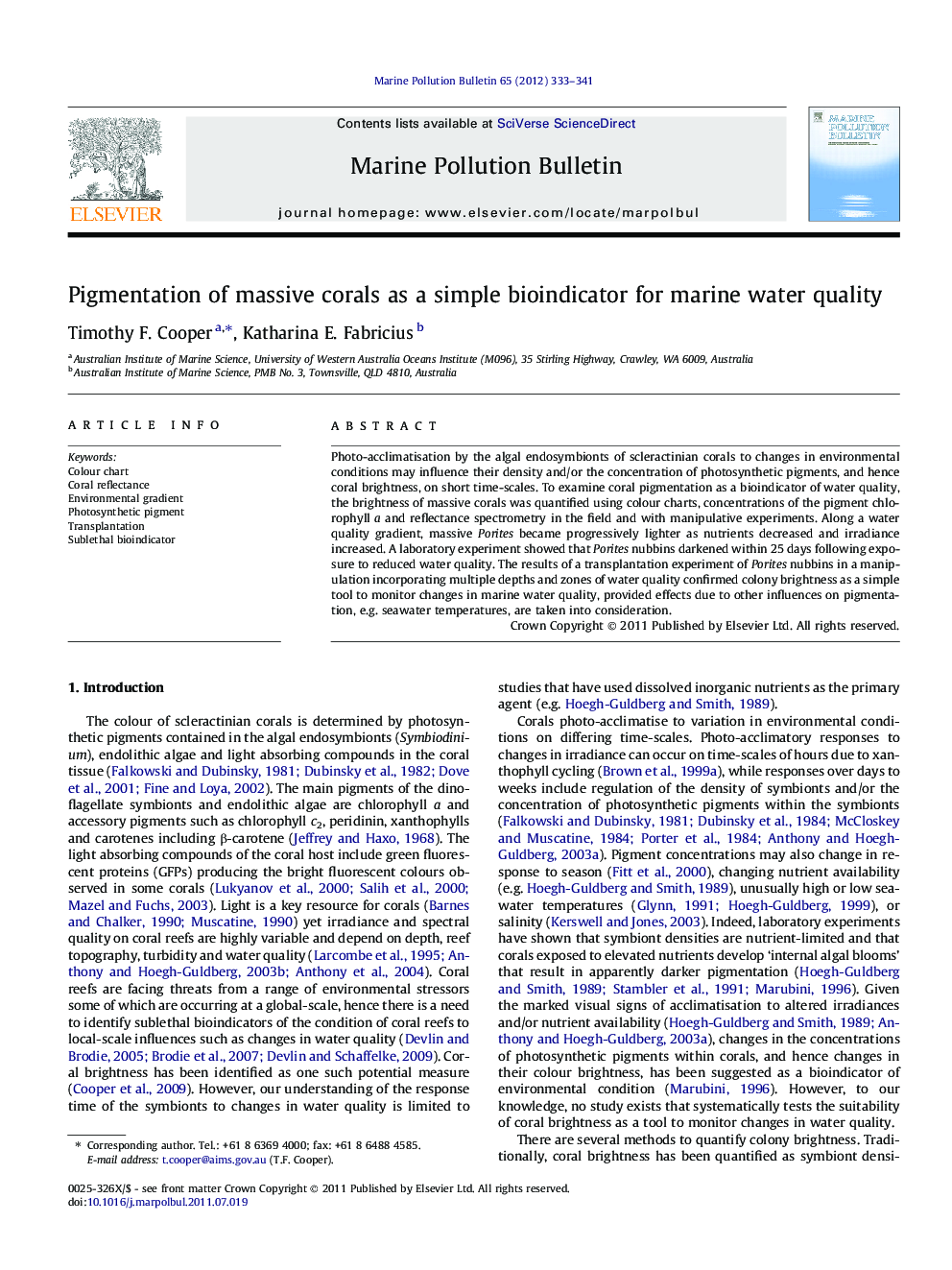| Article ID | Journal | Published Year | Pages | File Type |
|---|---|---|---|---|
| 6360305 | Marine Pollution Bulletin | 2012 | 9 Pages |
Abstract
Photo-acclimatisation by the algal endosymbionts of scleractinian corals to changes in environmental conditions may influence their density and/or the concentration of photosynthetic pigments, and hence coral brightness, on short time-scales. To examine coral pigmentation as a bioindicator of water quality, the brightness of massive corals was quantified using colour charts, concentrations of the pigment chlorophyll a and reflectance spectrometry in the field and with manipulative experiments. Along a water quality gradient, massive Porites became progressively lighter as nutrients decreased and irradiance increased. A laboratory experiment showed that Porites nubbins darkened within 25Â days following exposure to reduced water quality. The results of a transplantation experiment of Porites nubbins in a manipulation incorporating multiple depths and zones of water quality confirmed colony brightness as a simple tool to monitor changes in marine water quality, provided effects due to other influences on pigmentation, e.g. seawater temperatures, are taken into consideration.
Related Topics
Physical Sciences and Engineering
Earth and Planetary Sciences
Oceanography
Authors
Timothy F. Cooper, Katharina E. Fabricius,
